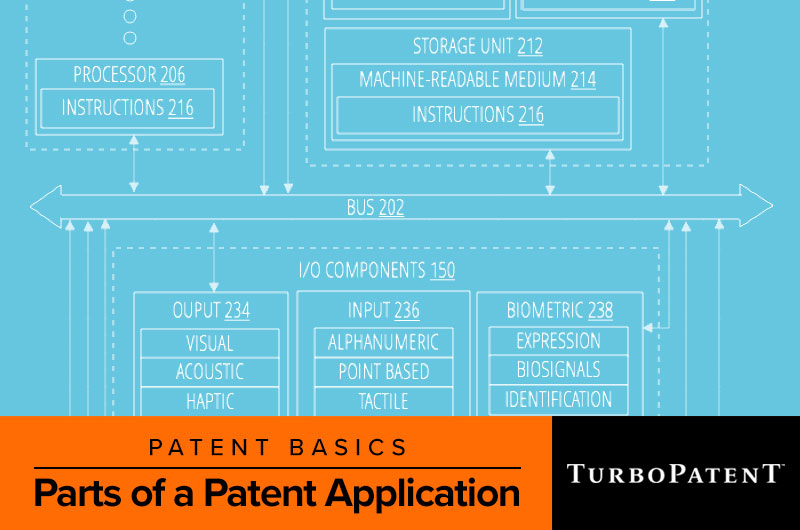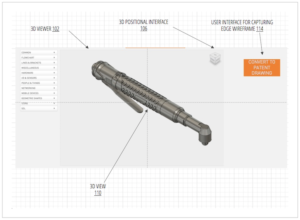Patent Basics – Parts of a Patent Application

You likely have a good idea of what a patent is in principle, but do you know what a patent application actually looks like? What sections does it contain and what is the purpose of each one? Basic knowledge of these building blocks of a patent application will provide you with a different perspective with which to think about your company’s inventions.
Here’s an overview of the parts of a patent application and how to best review a patent application before filing.
Parts of a Patent Application
A patent application is comprised of three main parts: the drawings, the detailed description (or specification), and the claims.

An example of the drawings in a patent application.
The drawings are illustrations or figures that can be used to explain the inventive concepts of an invention. They may include drawings of a physical object, views of a graphical user interface, electrical diagrams, flow charts, and many other graphics that can be used to explain an invention.
The detailed description describes an invention in words, by means of addressing the drawings. The goal is to provide enough detail that a person with ordinary skill in the area of the invention would understand how to recreate it. This requirement means that the description must be comprehensive and precise, leaving no ambiguity whatsoever.
The claims are sentences or phrases that describe the inventive concept(s) of an invention. They recite which concepts described in the detailed description are inventive. It is important to note that, when a patent application is allowed and a patent is granted, the claims are the only part of the patent that is enforceable. That is, a patent holder can only prevent others from using or practicing the concepts presented by the claims. Additional concepts included in the detailed description that are not recited in the claims will remain unprotected.
How to Read a Patent Application
Patent applications are often long documents that include a combination of technical and legal jargon, which can make them quite daunting to read. We recommend reading them like a recipe.
First, review the drawings. Just like how the pictures in a cookbook give you a general sense of which dishes are chicken, vegetables, or desserts, the drawings of a patent application can help provide a general sense of the invention. Is it software? Is it hardware? Is it a process? Reading a few steps in a flowchart or following the paths in a circuit diagram will provide a window into the invention.
Next, study the claims. They are like the list of ingredients in a recipe, as well as the steps for how to prepare the dish. Everything you see in the claims should be shown in the drawings (no secret ingredients) and every step needed to cook the dish must be fully described (no implied steps).
Finally, read the detailed description for further instructions that ensure the dish ends up exactly as it’s shown in the pictures. Each step is explained in further detail and recommended substitutions or alterations may also be described.
Using this method to read a patent will help you quickly gain a better understanding of the technology a patent covers. If you’re reviewing possible prior art, then you can quickly determine how your invention is different. If you’re reviewing your application before filing, then you can quickly determine, to continue the metaphor, if the recipe is complete.
To learn more about patenting, and best practices for early-stage companies, click the button below.




